Kamatama Udon is one of the most popular udon dishes in Japan, offering a delightful harmony of raw egg and dashi soy sauce. Despite its popularity, this delicious dish remains relatively unknown outside of Japan. I hope it gains the recognition it deserves abroad.
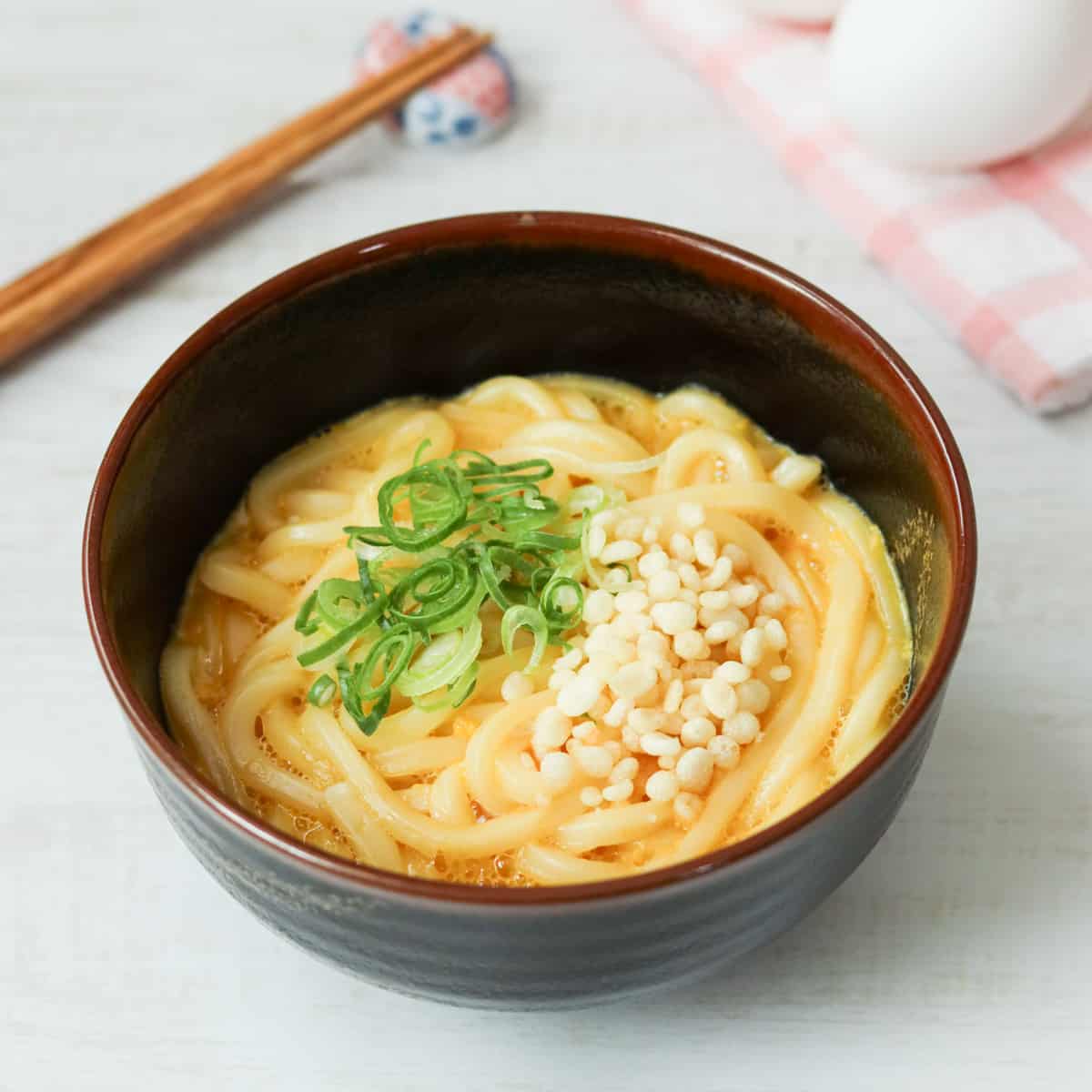
Jump to:
What is Kamatama Udon?
Kamatama Udon is a dish made with udon noodles, consisting of freshly boiled noodles mixed with a raw egg and soy sauce infused with dashi stock. "Kama" is short for "kamaage," referring to freshly boiled noodles, and "tama" is an abbreviation of "tamago," which means egg. Unlike udon noodle soup dishes, this dish doesn't contain broth; instead, it is seasoned with egg and dashi soy sauce.
The combination of egg and dashi soy sauce is simply perfect, creating a uniquely irresistible flavor. Its creamy, rich texture beautifully coats the noodles. Once you try it, you will be captivated by its comforting flavor.
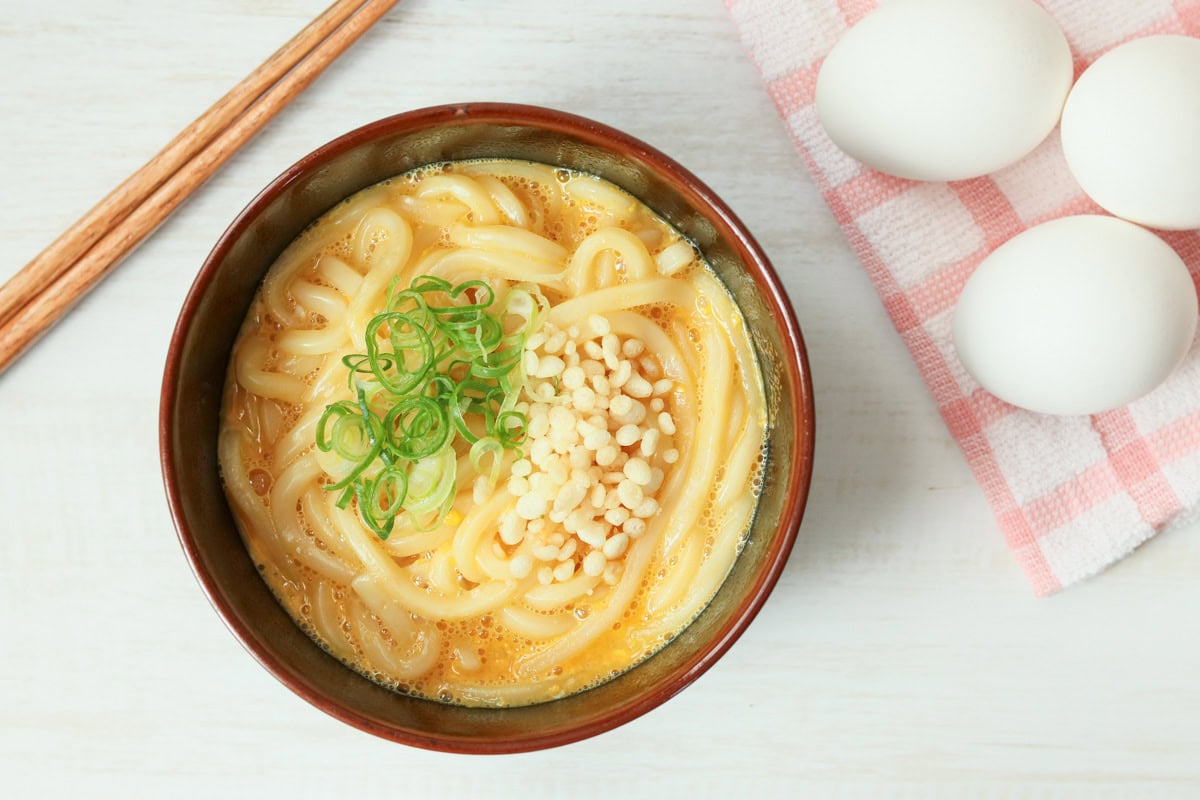
Exploring dashi soy sauce
This dish can be enjoyed with regular soy sauce, but it truly shines when drizzled with dashi soy sauce. As the name suggests, dashi soy sauce is made by infusing dashi into soy sauce. It has a lower sodium content compared to regular soy sauce, while providing a rich umami flavor.
The addition of dashi transforms the soy sauce into something irresistibly flavorful. While store-bought options are available at Asian markets, it is easy to make at home, so I encourage you to give it a try. To learn How to Make Dashi Soy Sauce, please refer to the linked page.
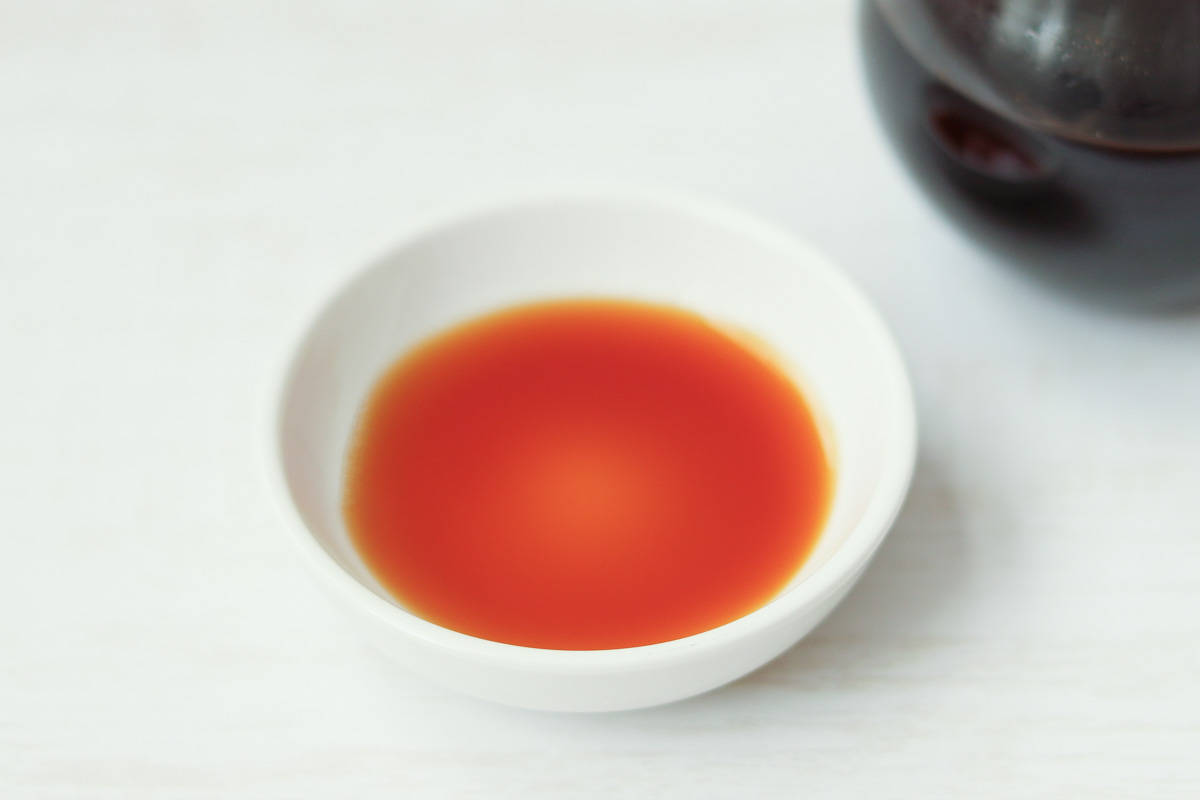
Egg options
In kamatama udon, three types of eggs are used: whole eggs, egg yolks, and onsen tamago (Japanese hot spring eggs).
When using a whole egg, it becomes partially cooked by the heat of the noodles during the mixing process. Whether to use only the yolk is entirely a matter of personal preference, though it is recommended if you want to enjoy a richer egg flavor.
Using onsen tamago slightly alters the flavor, making it a great choice for those who are uncomfortable with consuming undercooked eggs or who don’t have access to eggs that are safe to eat raw. This variation is sometimes referred to as "Ontama Udon."
In Japan, eggs safe for raw consumption are commonly available, so using whole eggs is the most common practice for this dish. Due to the combination of raw egg and udon noodles, it is sometimes referred to as the udon version of spaghetti carbonara. The blend of the partially cooked egg and dashi soy sauce creates a perfect match that is hard to beat.
Common toppings
By adding toppings, you can enjoy this dish with various flavors. There are several toppings that pair well with kamatama udon, including:
- Green onions (scallions)
- Tenkasu (tempura bits)
- Shredded nori seaweed
- Shaved bonito flakes (katsuobushi)
- Grated ginger
These toppings are optional, so feel free to use them according to your taste. Personally, I always go for green onions and tenkasu. If you have to choose just one, I highly recommend green onions, as they add a pop of color and a nice contrast in texture.
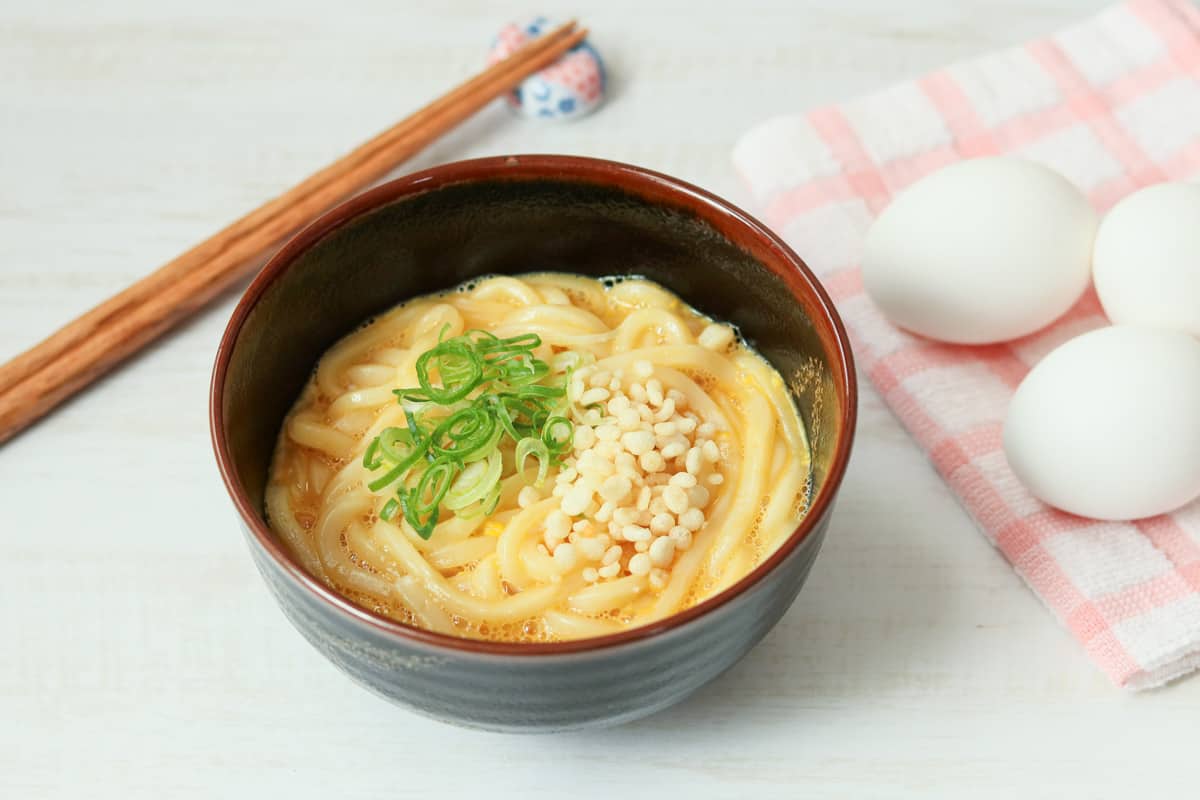
📋Step-by-step recipe
Ingredients
- 1 serving udon noodles (fresh, dried, pre-cooked, or frozen)
- 1 pasteurized egg, egg yolk, or onsen tamago (Japanese hot spring egg)
- ¾ Tbsp dashi soy sauce (You can substitute regular soy sauce, though the flavor will be slightly different.)
Toppings (optional):
- greens onions / scallions (thinly sliced)
- tenkasu (tempura bits)
Instructions
🕒 Total: 10 mins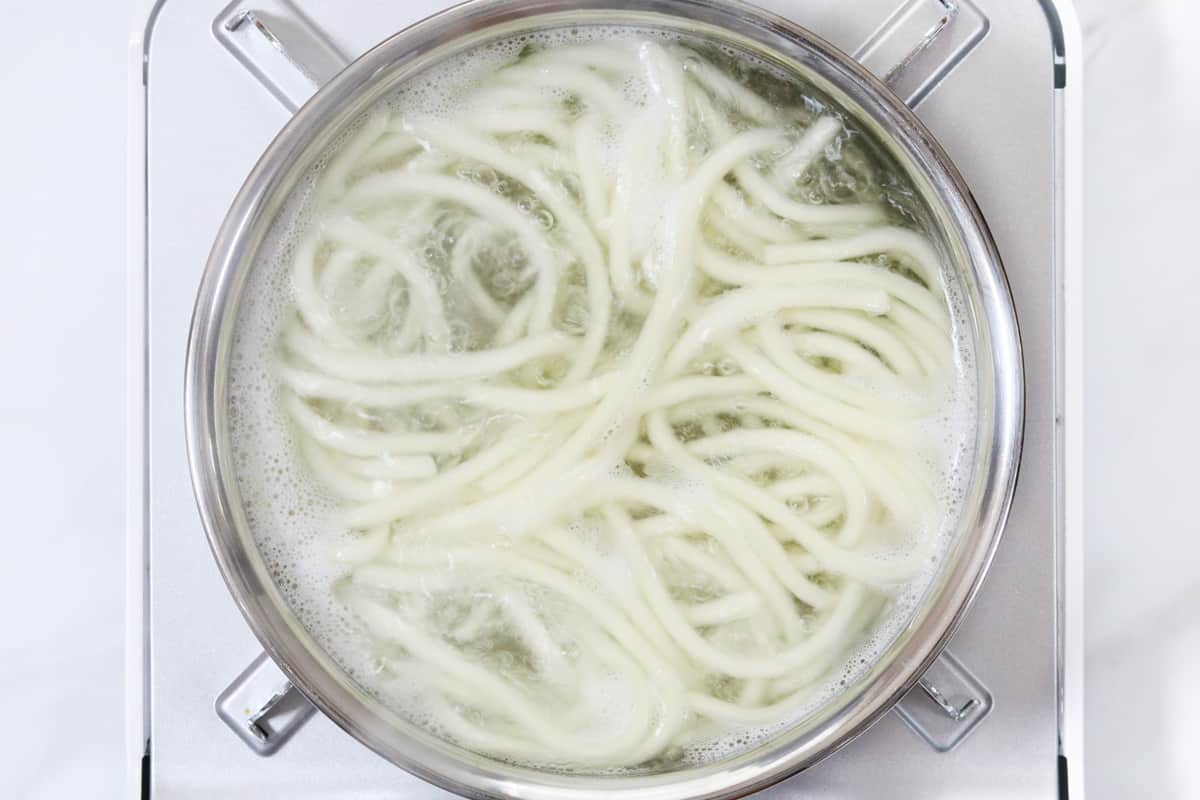
Step 1
Boil the udon noodles in plenty of water in a pot according to the package instructions.
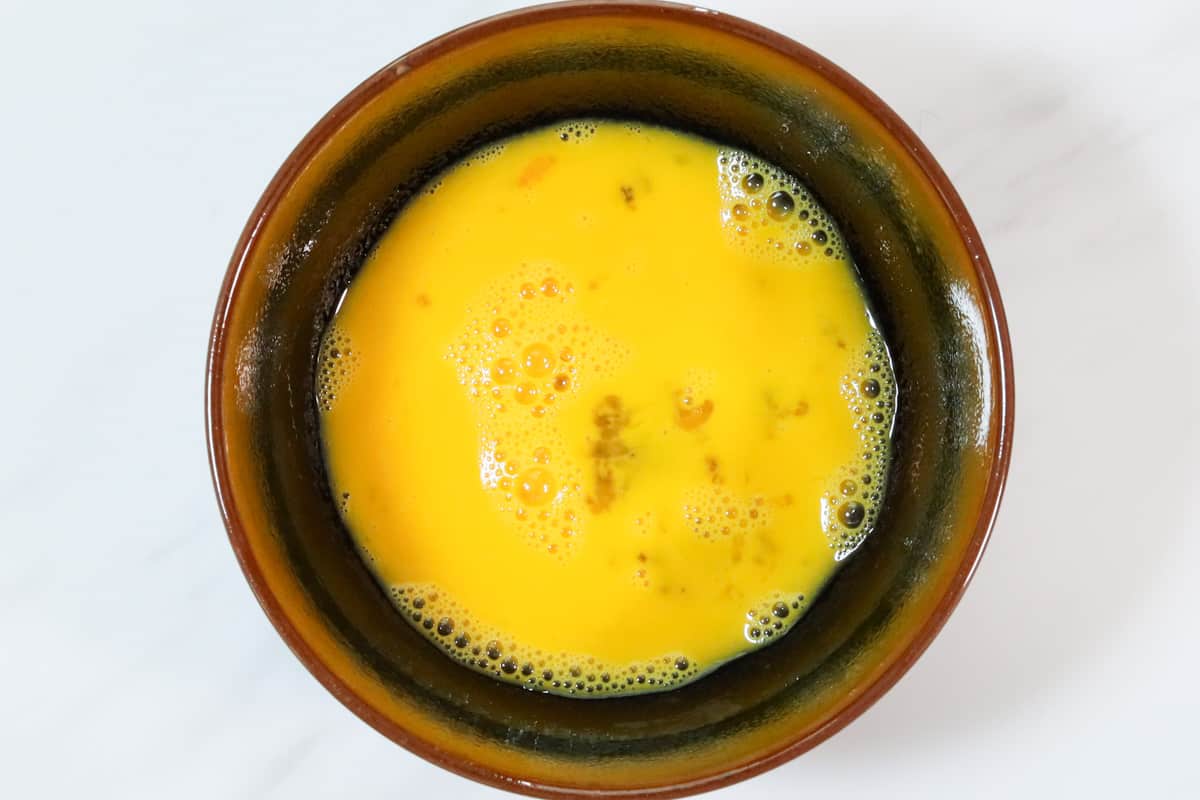
Step 2
Crack the egg into a bowl and beat it.
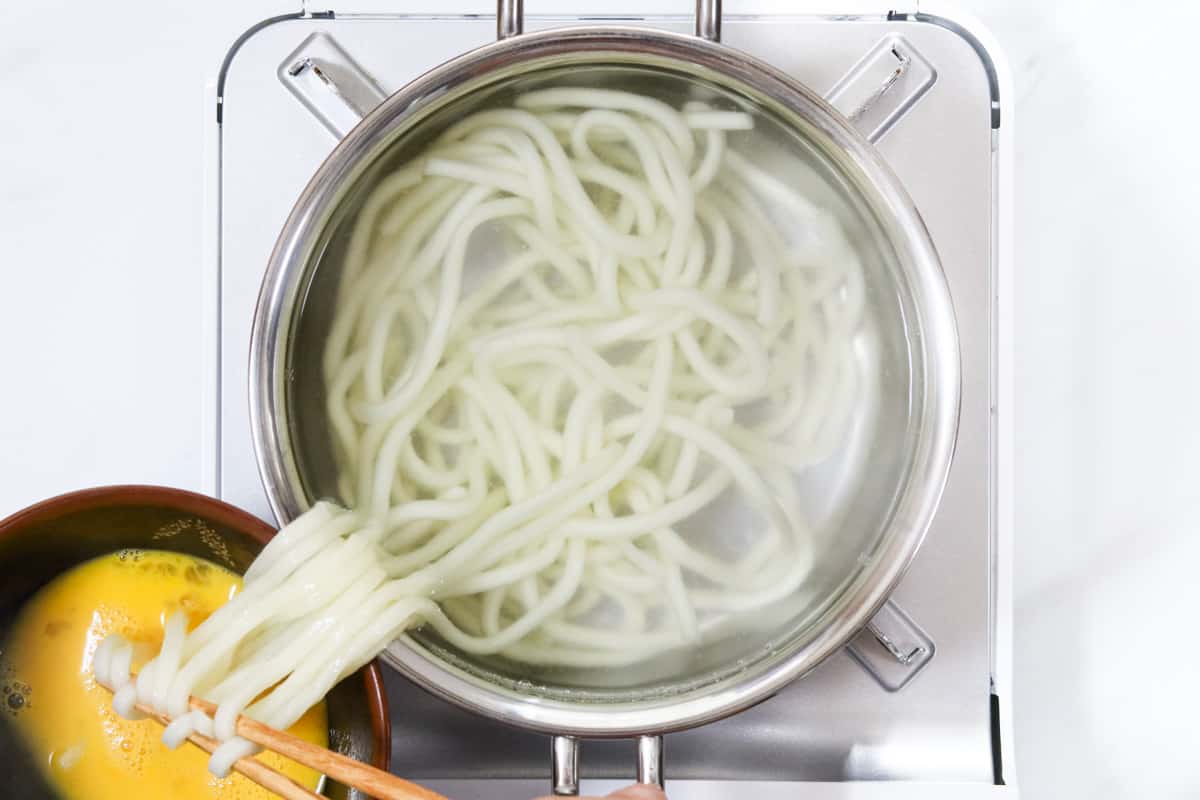
Step 3
Transfer the cooked udon noodles directly from the pot to the bowl, being careful not to include too much boiling water. Then, quickly mix them with the beaten egg.
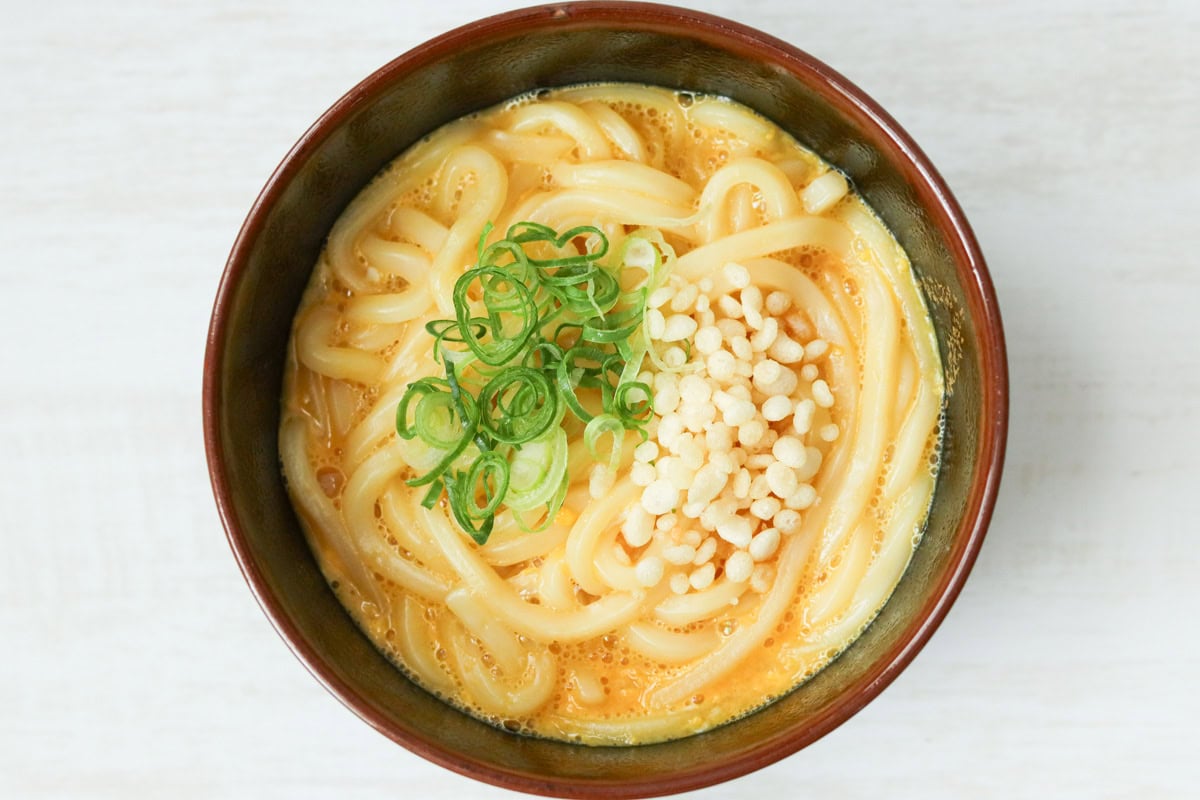
Step 4
Drizzle with dashi soy sauce, mix again, and top with green onions and tenkasu to taste.
To store
This dish is not suitable for storage. Please consume it as soon as possible.
Cooking tips
- Transfer the boiled udon noodles directly from the pot to the bowl without draining them in a colander. This step allows you to quickly mix the noodles with the beaten egg while they are still piping hot, resulting in a partially cooked consistency for the egg.
- Although not essential, letting the egg sit at room temperature for about 30 minutes beforehand or preheating the bowl in advance can make it easier to achieve a partially cooked consistency.
Health precautions
This dish is not suitable for pregnant women or those with weakened immune systems, such as older adults or children under 2 years old, as the eggs are not fully cooked. Please avoid consuming it if you belong to any of these groups.
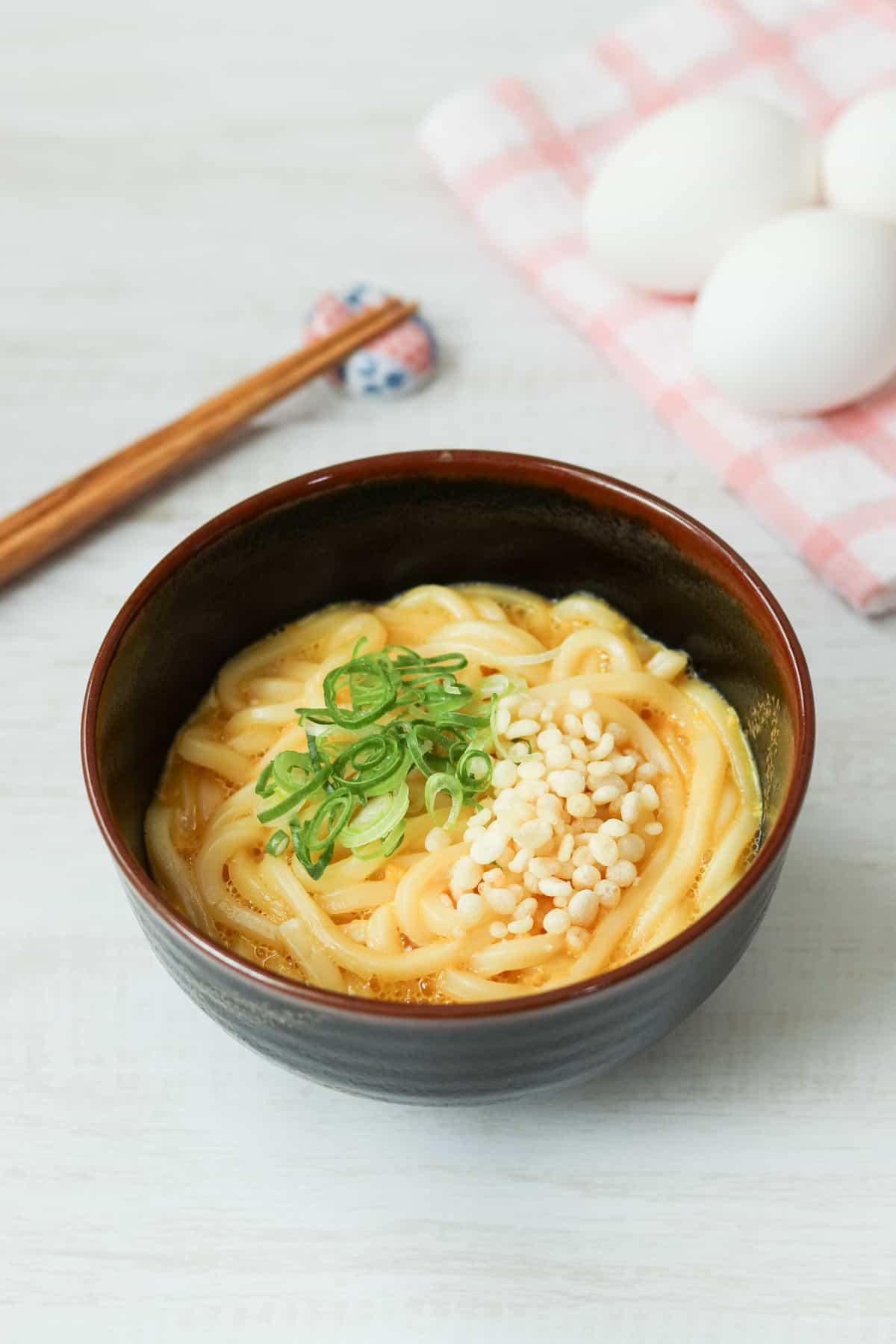
If you try this recipe, I’d love to hear what you think. Please consider leaving a review and star rating in the comments below. If you enjoyed it, I’d really appreciate it if you shared it with your friends.
Another egg-based udon noodle recipe you'll love
Recipe card

Kamatama Udon (Udon Mixed with Raw Egg)
Ingredients
- 1 serving udon noodles (fresh, dried, pre-cooked, or frozen)
- 1 pasteurized egg, egg yolk, or onsen tamago (Japanese hot spring egg)
- ¾ Tbsp dashi soy sauce (You can substitute regular soy sauce, though the flavor will be slightly different.)
Toppings (optional):
- greens onions / scallions (thinly sliced)
- tenkasu (tempura bits)
Instructions
- Boil the udon noodles in plenty of water in a pot according to the package instructions.
- Crack the egg into a bowl and beat it.
- Transfer the cooked udon noodles directly from the pot to the bowl, being careful not to include too much boiling water. Then, quickly mix them with the beaten egg.
- Drizzle with dashi soy sauce, mix again, and top with green onions and tenkasu to taste.
Notes
- This dish is not suitable for storage. Please consume it as soon as possible.
- This dish is not suitable for pregnant women or those with weakened immune systems, such as older adults or children under 2 years old, as the eggs are not fully cooked. Please avoid consuming it if you belong to any of these groups.

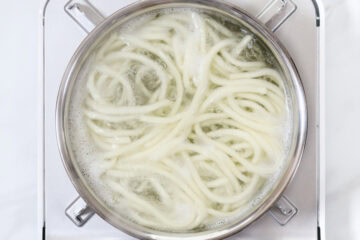

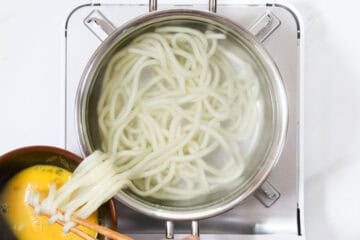
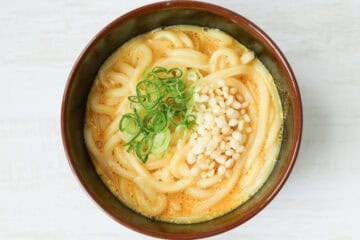
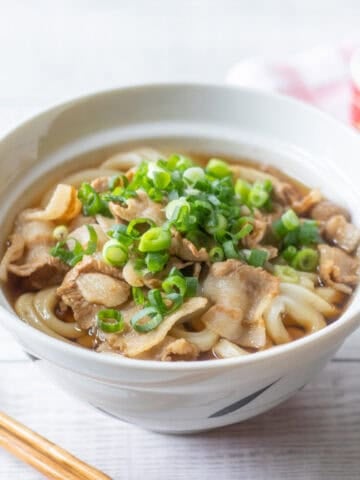
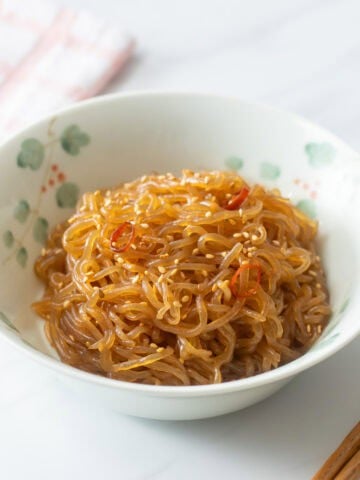
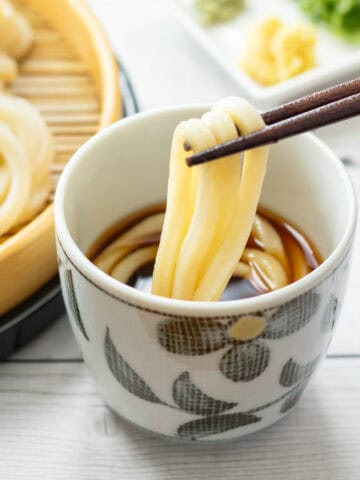

Leave a Rating and a Comment